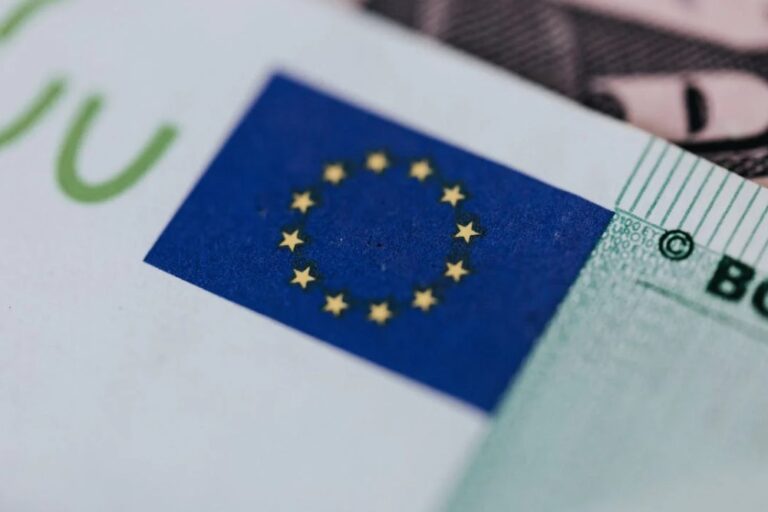Have you heard of the digital euro yet? For starters, it should be mentioned that the ECB and national central banks in the euro area started an initial phase of investigation of the digital euro project two years ago, in October 2021.
The inquiry phase will last 24 months, until October 2023. At the end, the Governing Council could decide to have an implementation phase launched to develop and test technical solutions and economic arrangements for the digital euro.
The body in charge of driving the digital euro is the High-Level Central Bank Digital Currency Task Force (HLTF-CBDC), composed of representatives from the ECB and national central banks in the eurozone.
Table of Contents
What is the digital euro
But what exactly is the digital euro? In fact, it will be an electronic means of payment for retail payments,
issued by the central bank and accessible to everyone throughout the euro area. However, it will by no means replace cash. Rather, the aim is to complement it, allowing ECB money to be used digitally as well.
The digital euro is a Eurosystem initiative, but it is also a joint European project involving a very diverse set of stakeholders. In the first quarter of 2023, the Commission will propose a regulation to bring the digital euro to life.
The digital euro, Christine Lagarde said, is not a stand-alone project, confined to payments:
Rather, it is an inter political and truly European initiative that has the potential to influence society as a whole. Maintaining citizens’ confidence in money and payment services in the digital age is an important goal in itself. But it is even more important for the European economy as a whole.
It is clear that a reliable, efficient and secure payment system is the basis for the effective functioning of our economies.
As Lagarde explained, for many decades, this basis has been provided by a hybrid model for payments. Central banks issue public money, essentially cash for people and reserve accounts for banks. The private sector relies on this to provide most of the total money, about 85 percent, in the form of commercial bank money.
The key to this hybrid model is that citizens can convert private money to public money on an equal basis, which ensures that all forms of money can be used indiscriminately for payments throughout the economy.
Goodbye cash?
First, Lagarde continues, people are increasingly paying digitally instead of using cash. Nearly half of euro area consumers say they prefer to pay with cashless means of payment, such as cards.
We will continue to provide cash, but if it is used less and less for payments, public money may eventually lose its role as a monetary anchor for the hybrid model, threatening its key function in ensuring trust in payments, with implications for the economy. Payments are simply too important a public good to be left to the market.
Monetary and economic stability
Second, in the absence of a public anchor, the emergence of new types of digital assets could generate instability and confusion among citizens about what is money and what is not. Here then, the digital euro could act as an anchor currency and ensure stability.
Lagarde gives the example of cryptocurrencies, held or used by 16 percent of Americans and 10 percent of Europeans in 2021. “Their unbacked variants, such as Bitcoin or Ether, are too volatile to serve as a means of payment.”
And although stablecoins are designed to be less volatile and therefore more suitable for payments, they are vulnerable and often not supported at all, as we saw earlier this year. This highlights the importance of the European cryptocurrency regulation, the so-called MiCA, which will protect consumers from some of the risks associated with cryptocurrencies.
Here is the European Union’s plan to curtail cryptocurrencies.
Digital euro, what about privacy?
But here an essential element comes into play. That of privacy. In the EU public consultation, 43 percent of respondents ranked privacy as the most important aspect of the digital euro, well ahead of other features.
“We try to ensure high standards of privacy for users of the digital euro. But full anonymity, such as that offered by cash, does not seem a viable option,” Lagarde clarifies, because, she says, it would violate other public policy objectives, such as ensuring compliance with anti-money laundering rules and combating terrorist financing. And it would also make it virtually impossible to restrict the use of the digital euro as a form of investment-for example, through holding limits or graduated remuneration-for which users’ identities need to be known.
It will therefore be necessary,” Lagarde further points out, “to at least provide a level of privacy equal to that of current electronic payment solutions. Although it is desirable to deviate from this baseline in certain circumstances.
For example, Brussels is exploring with the European Commission whether the digital euro can replicate some cash-like features. And, allow for greater privacy for low-value, low-risk payments, including offline payments.
The knot of legal tender for the digital euro
Another key issue in the legislative and policy decision that the EU will face is legal tender status.
Although an acceptance obligation must be weighed against principles such as freedom of contract and competition, it should be considered that it is a constitutional characteristic of cash – as central bank money – to be legal tender.
It would be unprecedented to issue central bank money for retail payments without legal tender, just because it circulates electronically.
Where we will pay with the digital euro
It should be mentioned that a positive effect of legal tender status could be to facilitate network exchanges. Thus, enabling citizens to have the ability to pay anywhere and easily access the digital euro.
In fact, the digital euro can serve as a monetary anchor only if it becomes a convenient means of digital exchange that is part of Europeans’ daily lives.
In this sense, it is crucial that it becomes available in a wide range of market segments. That means including digital payments in physical stores. Which is the largest segment with 40 billion transactions in 2019, but also e-commerce and peer-to-peer payments.
Read also: Digital Euro, what is it and how the EU proposal works: it will not be a cryptocurrency












